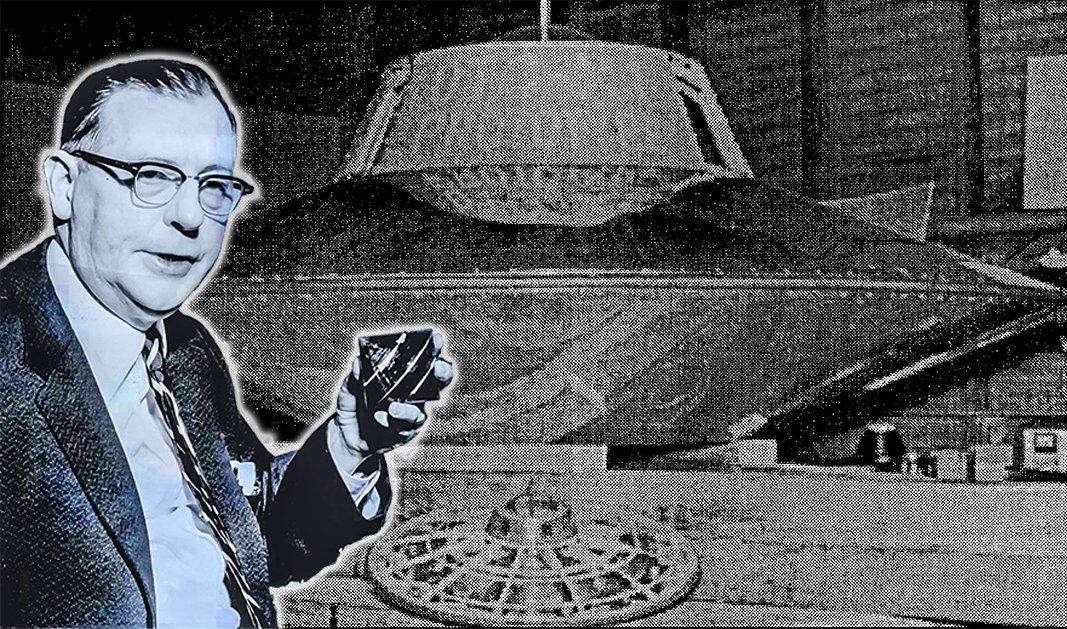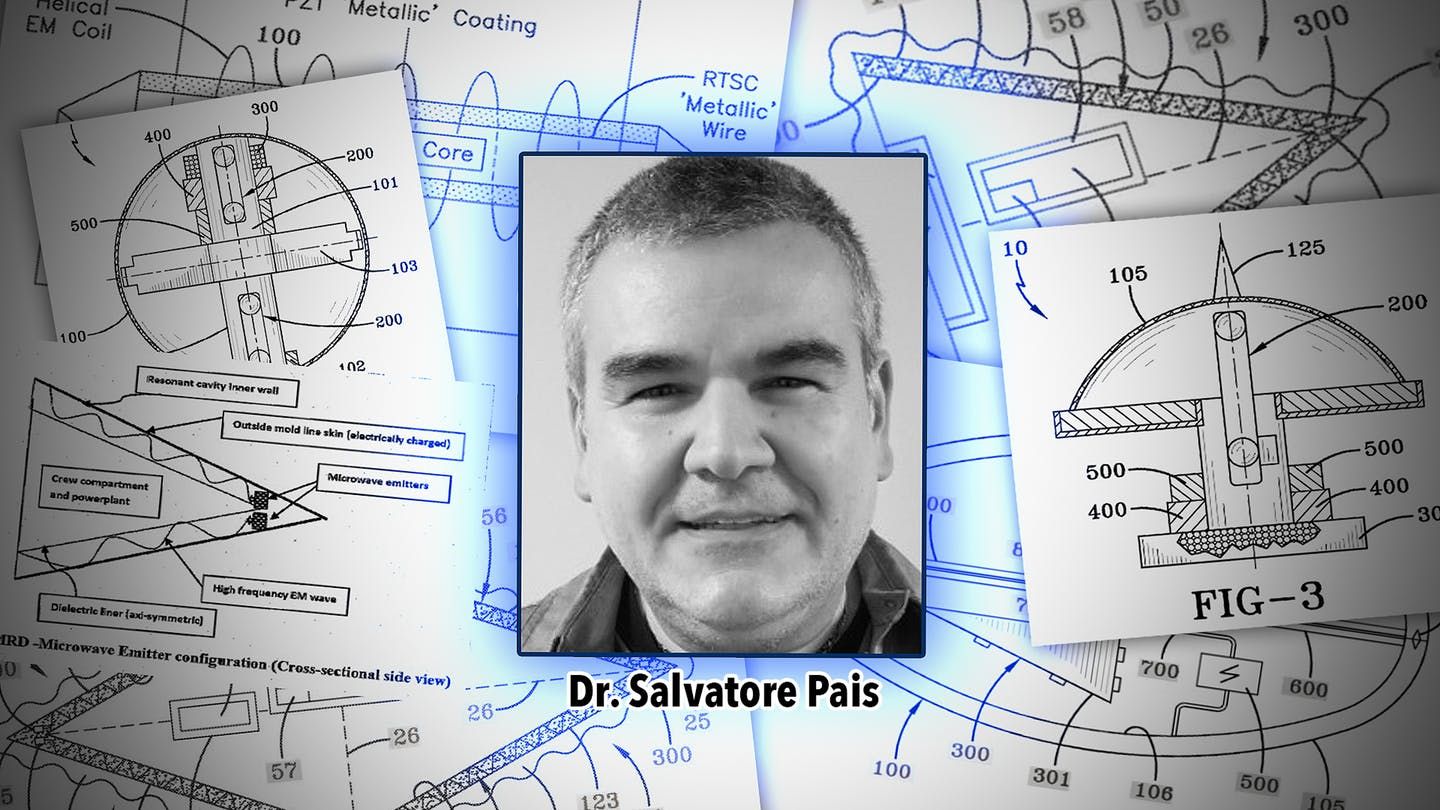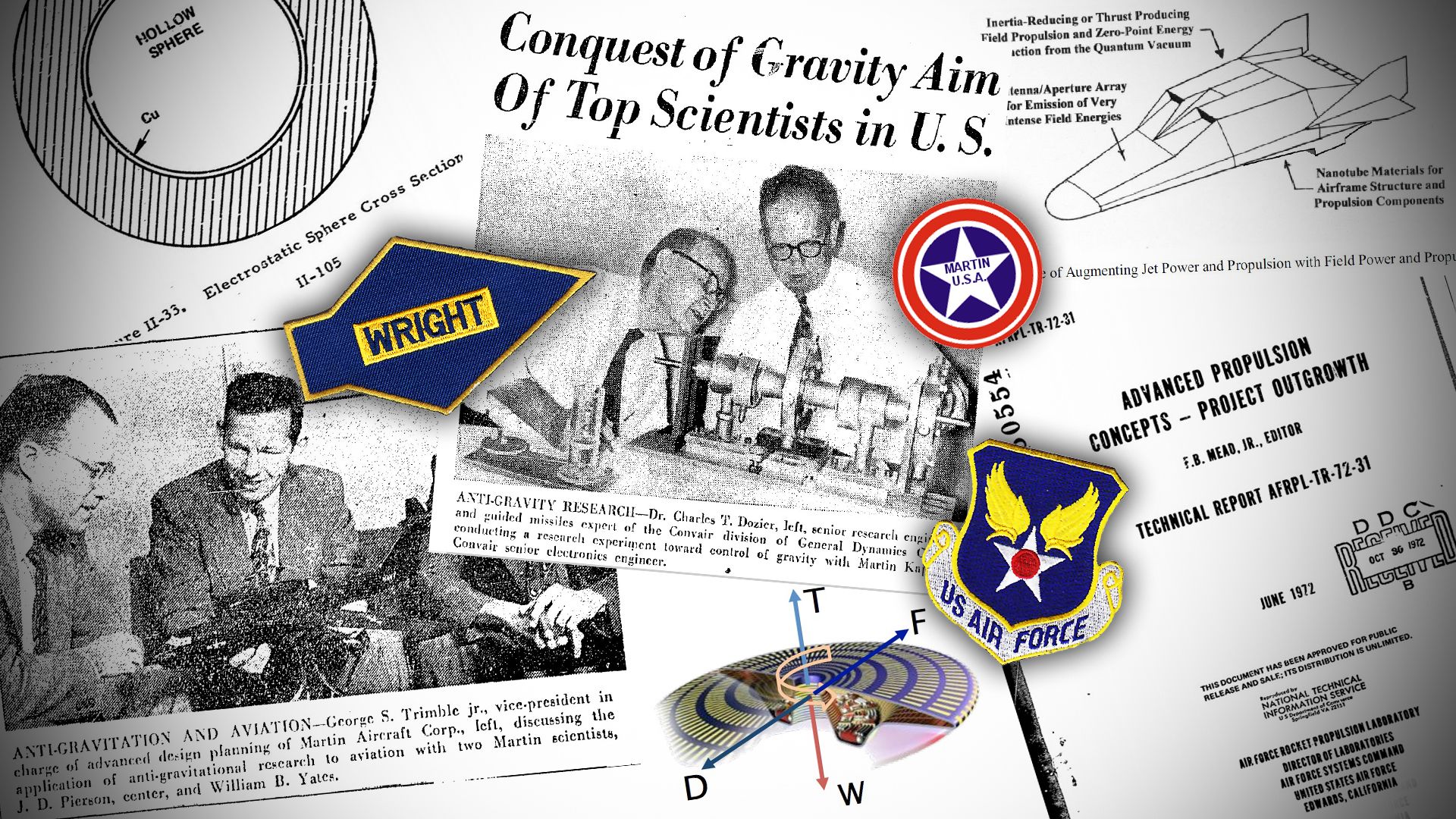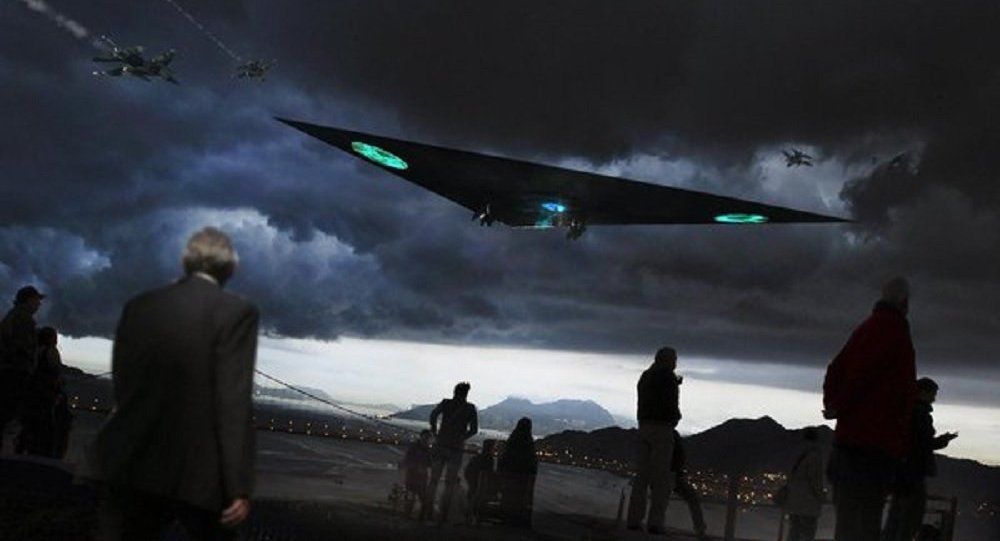The Story of Otis T. Carr – The Man Who Invented An ‘Anti-Gravity’ Vehicle In The 1950s
Article by Arjun Walia March 4, 2020 (collective-evolution.com)
• A recent investigation conducted by a Michigan State University professor and a former secretary from the Department of Housing and Development, along with a team of Ph.D students, tracked down approximately $21 trillion that went missing and unaccounted for from the Department of Defense and the Department of Housing and Development. They discovered that the money was diverted to fund government black budget projects, off the books, with no Congressional oversight. This black budget world has existed for many years.
• Take the subject of ‘anti-gravity’. This is a field full of reputable scientists and scholars, and real-world examples that have come not only from hard evidence but from extremely credible witness testimony. This isn’t the stuff of conspiracy theories or “fringe” science. But it is ‘black budget’. The technology developed under these programs could change the world, but instead it’s only used within the military-industrial complex for self-serving purposes.
• Efficient energy-generating devices that could eliminate the use of oil, or any other modern day fuel source for that matter, have been subjected to patent suppression. Any civilian who invents technology that rivals the black budget world is subjected to harassment and great difficulty in getting their inventions out to the public. That’s because these technologies have been ‘classified’, for if they were made public it would change everything, and would severely threaten the tremendous amount of power and control the global elite has over the human population.
• In 1971, patents for solar photovoltaic generators were subject to review and possible restriction if the photovoltaics were more than 20% efficient. Why would higher energy efficiencies be a “national security threat?” We’re talking about the suppression of solar technology that goes far beyond even the best commercial panels available today. Said former NASA astronaut Brian O’Leary about ‘free energy’ devices, “If these technologies were to be set free worldwide, the change would be profound, it would be applicable everywhere. These technologies are absolutely the most important thing that has happened in the history of the world”
• In the 1950s, there was a lot of media attention focused on the wave of UFO sightings, crashed saucers and aliens that had been recovered. It is very likely that the government or the military industrial complex had obtained saucer technology by this time. A document in the CIA online reading room describes how the German aeronautical engineer, George Klein, had been developing ‘flying saucers’ from 1941 to 1945. The document states: “The “flying saucer” reached an altitude of 12,400 meters within 3 minutes and a speed of 2,200 kilometers per hour. Klein emphasized that in accordance with German plans, the speed of these “saucers” would reach 4,000 kilometers per hour.”
• Otis T. Carr (pictured above) had similar claims. A protégé of Nikola Tesla, Carr and his team had constructed a number of fully functional flying saucers in the 1950s. He provided numerous public demonstrations and amassed millions of dollars from extremely wealthy people to further develop flying saucer technology. Carr’s goal was to fly to the moon in his “circular foil spacecraft” on December 7th, 1959. The craft would be propelled by an ‘artificial gravitic field’ and required no fuel. It would be powered by an ‘Utron electric accumulator’ – a sort of self-charging battery – utilizing the Sun’s electromagnetism. Carr claimed that a trip to the moon would only take a few hours.
• In the late 1950’s, Carr’s company, OTC Enterprises, Inc., published a statement in the Baltimore Enterprise newspaper that they were ready to build a flying saucer that was capable of travel outside of the Earth’s atmosphere, and were looking for $20 million in funding. Shortly thereafter, Carr’s laboratory was forcibly shut down. Claiming that Carr’s project would ‘destroy the monetary system of the United States’, federal agents confiscated his equipment and all documentation. Carr was heavily criticized, ridiculed, and made a fool of by the press. In January 1961, the Attorney General of New York, Louis J. Lefkowitz, stated that Carr had swindled investors out of $50,000. Later that year, True Magazine labelled Carr a “hoaxer.” By then, his laboratory had been destroyed and Carr’s group of engineers had been ordered to disband and cease contact with one another.
• It is clear that this was a coordinated government effort to shut Carr down. Such advanced scientific developments are reserved only for the black budget world. Carr was convicted and denied an appeal for his ‘crime’. He could not afford to pay the fine and served part of a 14-year jail term. After that little is known about what became of either Carr himself or the craft, but they never flew again. Carr is reported to have suffered from ill-health, a broken man. He passed away in Gardnerville, Nevada, in 2005.
• The global elite has always demonstrated their supremacy by ridiculing concepts that they don’t want made public. There are multiple technological developments that have been completely hushed up, for “national security purposes.” Still, anti-gravity technology has been around for a long time. Professor Theodore Lodre of the University of New Hampshire has studied the development of anti-gravity research in the United States and notes that “research activity seemed to disappear by the mid-1950s.” However, recently reported scientific findings and witness testimonies “show us that this (anti-gravity) research and technology is alive and well and very advanced.”
• On November 1, 2005, Patent #6,960,975 was granted to Boris Volfson of Huntington, Indiana. It describes a space vehicle propelled by a superconducting shield, which alters the curvature of space-time outside the craft in a way that counteracts gravity. The device builds on a claim by Russian physicist Eugene Podkletnov that superconductors can shield the effects of gravity.
• In 2016, the US Navy filed a patent for a hybrid craft “using an inertial mass reduction device”, that was invented by Salvatore Cezar Pais. The hybrid craft was actually approved in 2018. In January 2019, Pais presented a paper on a “Room Temperature Superconducting System for Use on a Hybrid Aerospace Undersea Craft” that would ostensibly power this hybrid craft. In the paper, Pais writes that “the achievement of room temperature superconductivity represents a highly disruptive technology, capable of a total paradigm change in Science and Technology.”
It’s astonishing to me how the topic of anti-gravity is still be placed in the “conspiracy theory” realm. This isn’t the stuff of conspiracy theories or “fringe” science, it’s a field full of reputable scientists and scholars, and real-world examples that have come not only from hard evidence but from extremely credible witness testimony as well. One thing is for certain when talking about such topics: one must delve into the black budget world.
Take, for example, a recent investigation conducted by a Michigan State University professor and a former secretary from the Department of Housing and Development. Together, with a team of Ph.D students, they uncovered approximately $21 trillion that went missing and unaccounted for from the Department of Defense as well as the Department of Housing and Development. Why is this relevant? Because they discovered that the money was going to fund black budget, off the books programs that require no oversight from Congress. This black budget world has been in operation for many years. You can read more about it here and here in two articles I’ve previously written on the subject.

Breakaway Civilization
The black budget world encompasses a separate civilization (Richard Dolan, “Breakaway Civilization”) that has used tremendous amounts of resources in all areas, from science to archaeology, to move itself far ahead of the mainstream world technologically. How many people does it employ? Who is operating it? Many of these questions remain unknown, but if you follow the money it will give you perhaps somewhat of an idea.
Any civilian who invents technology that rivals the black budget world has always been subjected to harassment, and has difficulty getting their innovations or inventions out to the public. That’s because these technologies have been ‘classified’, for if they were made public it would change everything, severely threatening the tremendous amount of power and control the global elite has over the human population.
The technology that’s been developed within these programs could change the world, but instead it’s used within the military-industrial complex for self-serving purposes, or so it seems. Efficient energy-generating devices that could eliminate the use of oil, or any other modern day fuel source for that matter, have been subjected to patent suppression.
Suppressed Technology List From 1971
For example, the previous list regarding technology suppressed was obtained by researcher Michael Ravnitzky in 1971. Most of the technology listed seems to be related to various military applications. You can view that list here. As Steven Aftergood from the Federation of American Scientists reports: “The 1971 list indicates that patents for solar photovoltaic generators were subject to review and possible restriction if the photovoltaics were more than 20% efficient. Energy conversion systems were likewise subject to review and possible restriction if they offered conversion efficiencies in “excess of 70-80%.”
Why would higher energy efficiencies be a “national security threat?” If this is true, we are talking about solar technology that goes far beyond the best commercial panels available today, which usually can’t even generate 20 percent efficiency.
“These concepts have been proven in hundreds of laboratories throughout the world and yet they have not really seen the light of day. If these technologies were to be set free worldwide, the change would be profound, it would be applicable everywhere. These technologies are absolutely the most important thing that has happened in the history of the world” – Brian O’Leary, Former Nasa Astronaut and Princeton Physics Professor, speaking about over-unity energy, or ‘free’ energy.
FAIR USE NOTICE: This page contains copyrighted material the use of which has not been specifically authorized by the copyright owner. ExoNews.org distributes this material for the purpose of news reporting, educational research, comment and criticism, constituting Fair Use under 17 U.S.C § 107. Please contact the Editor at ExoNews with any copyright issue.



 Despite the patents sounding extremely far-fetched, official documents show that the Chief Technology Officer of the U.S. Naval Aviation Enterprise personally attested to the reality of these inventions and their importance to national security and peer-state competition in appeals with the United States Patent and Trademark Office (USPTO). Meanwhile, the scientists and physicists we have talked to on and off the record have made it clear that they find the claims largely absurd and not grounded in scientific fact. At the same time, there is, in fact, many decades of government research into similar technologies that are very much alike in concept to some of Pais’s work. As such, while these are obscure ideas and remain on the edge of science, they are not exactly brand new.
Despite the patents sounding extremely far-fetched, official documents show that the Chief Technology Officer of the U.S. Naval Aviation Enterprise personally attested to the reality of these inventions and their importance to national security and peer-state competition in appeals with the United States Patent and Trademark Office (USPTO). Meanwhile, the scientists and physicists we have talked to on and off the record have made it clear that they find the claims largely absurd and not grounded in scientific fact. At the same time, there is, in fact, many decades of government research into similar technologies that are very much alike in concept to some of Pais’s work. As such, while these are obscure ideas and remain on the edge of science, they are not exactly brand new.





